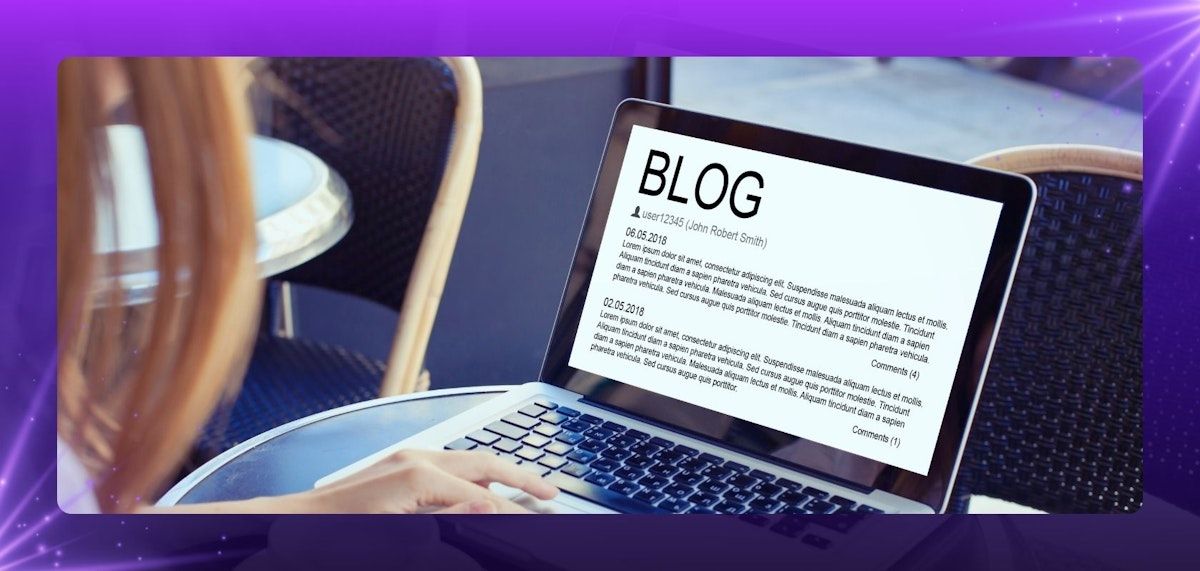Dominate 2024 with SEO for Digital Products
For businesses offering digital goods, getting good at SEO isn't just helpful - it's a must.
Imagine this: You have an amazing product. But, it's buried under a mountain of other products. Why? Your SEO strategy isn't strong enough. Hella frustrating, isn't it?
Fear not. This guide will help you understand all the important stuff about SEO for digital products in 2024.
We've got everything you need, from finding the right keywords to using the best tools.
Digital product SEO is a critical skill to learn - it helps your products get more visits without those pesky Google ads costs. Without SEO, even the best digital products can go completely unnoticed.
Think of it this way:
- It's like comparing a shop on a crowded street to one hidden in a narrow back street. When you make your online content better - by using the right keywords and making it easier for users to enjoy your content - you're basically making your store easier for everyone to find and use.
Ready to get going? Let's dive into learning about SEO for your digital stuff.
TL;DR
- SEO for digital products is all about getting seen, driving traffic, and boosting sales.
- First things first: keyword research is a must. You need to find the right terms that your potential customers are searching for. This sets the stage for everything else.
- Make sure to optimize on-page elements like titles, meta descriptions, and product descriptions. These are key for making sure search engines—and people—know what your products are about.
- Don't forget about site speed, mobile optimization, and navigation. Nobody likes a slow, clunky website. Smooth and fast user experience is a given.
- Content marketing and link building are super important. Creating valuable content and getting other sites to link to you can really boost your site's authority.
- Keep an eye on things. Regularly check your SEO performance and be ready to adapt as needed. Search engine algorithms change and so should your strategy.
Importance of SEO for Digital Products
 Example of search results showing effective title tags and a search bar
Example of search results showing effective title tags and a search bar
Without good SEO, your digital products can't be found on Google. That's just a cold, harsh fact. You can have the best product out there but without that traffic, you are primed for failure.
In other words - mastering SEO for digital products is paramount to your continued online success. SEO is also your go-to strategy to improve brand awareness.
But without further ado, let's dive into how you can make SEO work for you.
Driving Organic Traffic
When folks look for stuff to buy, they tend to click on the top results. That's why it's important for any product sold online to show up near the top in search rankings.
When pages are optimized with relevant keywords and for correct user intent, they are more likely to attract relevant traffic. Also - long-tail keywords can target niche audiences, bringing in more specific search queries and providing you with prospects that are further along in the buying process.
Organic traffic is not just about numbers; it's about quality. Visitors who find your product through search are already interested in what you're offering - it truly is the easiest way of attracting buying customers to your service or product.
A well-optimized website with high-quality content can keep attracting visitors over time, making SEO a smart investment.
Improving Conversion Rates
SEO does more than just bring people to your site; it helps convert leads into loyal customers.
When product pages are optimized with effective titles, descriptions, and on-page elements, they become more appealing and informative. Using meta descriptions and title tags effectively can improve click-through rates and as a result - user engagement.
Technical SEO aspects, like load speed and mobile compatibility, also play a role in conversions. Slow-loading sites can frustrate users, leading to higher bounce rates. Utilizing tools like Google Search Console can help identify and fix these issues.
Additionally, internal linking and high-quality backlinks can boost your site's authority, encouraging users to trust your content and make a purchase. Improving these elements not only brings in traffic but also ensures that more of that traffic turns into customers.
Keyword Research for Digital Products
Keyword research is a big deal for getting your digital products noticed. Finding the right keywords can help you understand what your audience is looking for and improve your site's traffic.
Identifying Relevant Keywords
The first step I take in keyword research is finding relevant keywords. I use keyword research tools like Google Keyword Planner, Ahrefs, and SEMrush to discover what my target audience is searching for.
When choosing keywords, I look for a balance between search volume and competition. Finding just the right balance can be tough, tho.
High-volume keywords are awesome but often face tough competition. Here’s where long-tail keywords come in handy. These phrases have lower competition, making them easier to rank for.
I try to identify keywords that align with my digital products, like “best graphic design software for beginners.”
Long-Tail Keywords
As mentioned, long-tail keywords are my secret weapon. These are longer, specific phrases high-intent users search for. They may have lower search volumes, but they usually have higher conversion rates. This is because they target users who already know what they want.
Take, for instance, instead of just going for “design software,” I target “affordable graphic design software for beginners.” This specificity helps attract more targeted traffic.
Examples:
| Long-Tail Keyword | Global Search Volume | Competition |
| best project management software for small businesses | 50 | Low |
| affordable graphic design software | 30 | Medium |
| digital marketing tools for startups | 20 | Very low |
Focusing on keywords like these can be a game-changer for your digital product strategy.
Competitor Analysis
Analyzing competitors is crucial for my keyword research. By checking what keywords my competitors are using, I can find gaps and opportunities.
For example, if I notice my competitor ranks well for “digital marketing tools,” I might target a related niche/keyword they’re missing. This helps me refine my keyword strategy and get a leg up on the competition.
Tools to Use:
- Ahrefs
- SEMrush
Analyzing my competition, I ensure I’m not just following the crowd but also finding good, outside the box, opportunities.
Implementing Keywords
Once I have my target keywords, it’s time to put them to good use.
The best way to do this is by placing these keywords in product titles, descriptions, meta tags, and URLs. But don't fall into a trap of keyword stuffing (using keywords too many times on your page)
Instead, I focus on creating high-quality, engaging content that naturally fits the keywords.
For example:
- Title: "Best Project Management Software for Small Businesses"
- Description: "Discover the top project management tools designed for small enterprises. Efficient, affordable, and easy-to-use software for your growing business needs.”
By doing this, I not only improve my SEO but also enhance the user experience.
On-Page SEO for Digital Products
Optimizing on-page elements such as title tags, meta descriptions, and product descriptions is essential for improving your digital product's visibility and attractiveness to both search engines and users.
Here’s the rundown on how to effectively optimize these components.
Title Tags and Meta Descriptions
Title tags and meta descriptions are the first things people see in search results.
The title tag should be concise and incorporate your primary keyword. Ideally, keep it under 60 characters.
Imagine you’re selling project management software. Instead of a bland title like "Project Management Software," try something more engaging like "Top Project Management Software for Teams - Free Trial."
Meta descriptions give a brief summary of the page content. They should be under 160 characters.
For example, "Discover top-rated project management software to streamline workflows and boost productivity. Suitable for small to medium teams. Start your free trial today!" Including a call to action and relevant keywords can significantly boost your click-through rates.
Product Descriptions
Good product descriptions are a must for digital product SEO. They should be detailed and unique. Highlight the best features of your product and mention the benefits of using your solution.
For instance, if you’re selling a task management tool, focus on features like ease of use, integration options, and time-saving capabilities. Address any potential customer concerns clearly - it might also be a good idea to include a FAQ section.
Use bullet points to make your text easy to read.
Example:
- Easy to Use: Intuitive interface with drag-and-drop functionality.
- Integrations: Seamlessly integrates with popular tools like Slack and Google Drive.
- Boost Productivity: Helps teams save up to 10 hours per week.
Use relevant keywords naturally throughout the description without making it feel forced. This helps search engines understand the content while keeping it reader-friendly.
Technical SEO for Digital Products
Knowing how to work with technical SEO is key for making sure people can find and use your website easily. Pay attention to:
- How fast your site works
- Making images load faster
- Making sure your site works well on phones and tablets
These steps help you offer your leads a seamless user experience - which in turn will increase your conversion rates.
Site Speed and Performance
Site speed really makes a big difference for making visitors happy and getting better spots in Google search results. Nobody enjoys sitting around for a slow site to come up, and Google keeps an eye on this as well.
If your site takes forever to load, users will bounce. This will hurt your SEO.
Boosting website speed can be done in a few ways:
- Making pictures the proper size
- Using browser caching to help load pages faster.
- leveraging content delivery networks (CDNs)
Did you know pages that open in two seconds only lose about 9% of visitors? If a page takes five seconds, the bounce rate immediately jumps to 38%.
Optimizing Images
Image optimization is crucial for any digital product site, since images can slow things down if they are not structured correctly.
To keep your site quick, compress images using tools like TinyPNG or ImageOptim. Choose the right file format - nowadays it's usually WebP or SVG, depending on the use case.
Don’t forget to use descriptive filenames and alt tags to make your site more accessible and help search engines understand your content.
For instance, "dark-blue-widget.png" is already a lot better than "IMG1234.png."
Mobile Optimization and Responsive Design
Making your website phone-friendly is super important. Nowadays, lots of folks use their phones to surf the web. So, your site has to look great and work smoothly on small screens - but also on the largest 4K screens.
This is where responsive design comes into play. Your site should adjust fluidly, no matter the device.
Use flexible grids and layouts to make sure everything scales properly. CSS media queries help a lot here.
You want text that can be read without having to zoom in, buttons that are easy to push, and no need to scroll sideways, which is super annoying.
A mobile-friendly site not only makes users happy but also scores extra brownie points with Google.
Content Marketing for Digital Products
 Creating engaging blog posts for Digital Product SEO
Creating engaging blog posts for Digital Product SEO
Creating valuable content helps attract and engage your target audience while establishing your brand as an authority. It’s all about providing helpful information and building trust with your potential customers.
Pro-tip: Create "link-bait" content, like useful calculators or infographics, in order get those backlinks on autopilot.
Blog Posts and Articles
Consistently publishing blog posts and articles can massively boost your SEO for digital products and provide real value to your audience.
When I write, I make sure to talk about stuff that my possible prospects wonder and have trouble with.
It’s important to write content that is not just informative but engaging too.
Think about talking to a buddy, swapping tips and advice. That's the feel your blog should have.
Use a mix of text, images, and maybe even videos.
And remember, add keywords, headings, and meta tags to your posts. This makes it easy for search engines to show your posts to the right people.
User-Generated Content
User-generated content (UGC) is like letting your best customers help with some of the advertising for you.
Encourage customers to share reviews, testimonials, and social media posts about your digital products.
This kind of content builds social proof and trust, which is super valuable.
I always feature customer reviews directly on my website and social media. It shows real-life use cases and authentic experiences.
To get more of this content, ask your users directly to share their thoughts.
- You can offer incentives like a shoutout or a small discount.
- This not only promotes engagement but also helps your potential customers see the benefits of your product through someone else’s eyes, making your content marketing strategy even stronger.
- This is also a great way of getting valuable information from your users
 Personalized outreach email to get quality backlinks
Personalized outreach email to get quality backlinks
Link Building for Digital Products
To make your digital products more noticeable, it's vital to get high-quality links from other websites. You can do this through different methods:
- Reaching out to other websites to ask for a link insertion/exchange,
- Writing guest posts on blogs
- Connecting with influencers
- Using link marketplaces
Backlink outreach
Quality backlinks are links from other reputable websites pointing to your site. They are like virtual thumbs-up, showing Google your content is worth its salt.
To get these backlinks, I focus on reaching out to industry-related sites and authoritative blogs. Also, it's a good idea to check who's linking to the competition - and reach out to those websites as well.
Personalized outreach emails work best in convincing webmasters to link to my content.
Including a clear benefit for them, such as a mention in social media or a high-quality guest post, can make the offer more enticing. Or you can sweeten the deal by offering them a small amount of money in exchange.
Guest Blogging
Guest blogging is a great way to get backlinks and share my knowledge.
By posting articles on well-known blogs closely related to my topic, I not only get more people to know about me but also receive important links back to my own site.
When I pitch to blog owners, I make sure to craft personalized and relevant pitches – no one likes generic ones.
Guest posting is a win-win: they get great content, and I get a quality backlink or two.
Influencer Outreach
Working with influencers can hugely improve my link-building game.
I start by finding influencers who are a good fit for my digital product. These influencers should also have followers who are actively engaged.
Whether it’s offering them free products, discounts, or exclusive content, I ensure there’s something valuable for them in return for a mention or a backlink.
These collaborations can drive targeted traffic to my site and as a result improve my search engine rankings.
Plus, influencers can often persuade their followers to try my product. Having them mention me makes my products seem more trustworthy.
 Influencer promoting a digital product for SEO backlink building
Influencer promoting a digital product for SEO backlink building
Integrating SEO with Other Digital Marketing Strategies
Mixing SEO with social media and video can massively boost your visibility and create more engaging content for your audience. Here's a good way to make it work:
Social Media Integration
When I think about merging digital product SEO with social media, the main goal is to drive more organic traffic to my digital products.
By sharing my content on platforms like Instagram, Twitter, and Facebook, I can attract more users and generate valuable, albeit nofollow, backlinks.
First, I use target keywords in my social media posts. This not only makes the content relevant but also helps it appear in social searches. When I'm promoting e.g. my ebook, I'll also use the #ebook hashtag.
The more shares, likes, and comments my posts get, the higher my chances of driving traffic to my product pages - so I like to create content that gets a reaction from my audience. Google views social media traffic as a huge bonus for the overall rankings of any website.
Another key point is cross-posting your content.
I make sure to share my blog posts and YouTube videos on multiple platforms to maximize my reach and user engagement. This strategy makes sure my SEO efforts are supported by social media.
Video SEO for Digital Products
Video content is another treasure trove for boosting my digital product's SEO.
By optimizing my YouTube videos, I can drive significant organic traffic to my product pages.
The first thing I do is focus on the video title and description. Including primary and secondary keywords helps my videos show up in both YouTube and Google searches.
For instance, if I'm showcasing a guide on how to use my tool, I'll make sure the title grabs attention and is full of search-friendly words.
Thumbnails are super important too. An eye-catching thumbnail can dramatically increase click-through rates.
Finally, linking back to my website or product pages in the video description is considered good practice. It’s an easy way to turn viewers into customers - and to give those extra positive signals to Google.
Bonus points: Chatting with viewers in the comments can also make the video more popular and bring in more viewers.
 Sharing optimized content on social media to improve your SEO for digital products
Sharing optimized content on social media to improve your SEO for digital products
Measuring and Monitoring SEO Performance
Tracking and analyzing your SEO performance is vital for knowing what works and what doesn't.
You can use Google's free tools to see how well your website is doing. They show me things like how many people visit the website, how long they stay, if they buy stuff, and what keywords people used to find your site.
All of this helps me make decisions based on data - when it comes to my SEO strategy.
Adapting to SEO Trends and Updates
SEO is like fashion; it’s always changing.
Keeping up with new search trends and algorithm updates is very important:
- Follow industry news, subscribe to SEO blogs and join online communities to stay updated.
- Be prepared to adjust your plans when new updates and best practices come in. This helps keep your rankings right on track.
One instance of such new trends is Google's incorporation of AI-generated summaries at the tops of search results or SGE. With the advent of SGE and AI-generated summaries, backlinks and structured data are becoming ever more important to online businesses.
Scaling SEO for Large Enterprises
Scaling SEO for big companies is like keeping a lot of bowling pins in the air. It's tough, but can be done with the right plan.
First, doing keyword research and having a topical map is crucial. Massive websites need an extensive list of relevant keywords, properly categorized in a semantic topical map. I like to break these down into clusters. This way, I can ensure every section of the site targets specific search terms.
Regular Audits
I have a trick up my sleeve for staying ahead: regular SEO audits. They let me catch small problems before they turn into huge headaches. These audits make sure everything on my website is doing well: from backlinks to how my pages works technically.
Technical SEO: Big websites often face technical issues. When we talk about technical SEO, it means solving problems such as:
- Slow loading times
- Duplicate content
- Broken links
These fixes can significantly boost traffic and improve rankings in search engines.
Content Scaling: Creating a lot of content quickly without sacrificing quality is tough. Here’s what I usually do:
- Content templates: Speed up production by using templates.
- Automation tools: Use tools to schedule and publish content.
- Content teams: Having a dedicated content team helps maintain quality.
Taking Algorithm Changes into Account
Keeping up with updates to algorithms is crucial if you want to keep your rankings high and get better at SEO. Let me tell you why it's important to keep up with all of these changes, and how you can use AI to help your digital product SEO game stay on point.
The Role of AI in SEO
AI plays a huge role in modern SEO. Search engines like Google are using AI to refine their algorithms. This means that the way your digital products are ranked can change based on how well you adapt to these updates.
Google is getting smarter at figuring out which pieces of content are most relevant for their users. So now it's more important than ever before to create content that is not only high-quality but also as useful as possible to your target audience.
Another aspect to think about is voice search. With the rise of virtual assistants, voice search is getting more common. An AI-based SEO strategy can help you optimize for these kinds of queries: by focusing on everyday language.
Using AI tools can also help you analyze and predict changes. In addition to AI, Tools like Google Analytics help you monitor what's happening underneath the hood of your website. The data you get from these tools allow you to adjust your strategy quickly in response to algorithm updates.
The Roadmap for Digital Product SEO in 2024
 A person writing a roadmap on laptop for their digital product SEO
A person writing a roadmap on laptop for their digital product SEO
Alright, let's talk about your SEO roadmap!
Key Points
- Prioritize: Start by identifying which SEO tasks are most important. Focus on high-impact activities first.
- Know exactly what you want: For each part of your plan, decide exactly what you're trying to achieve. Maybe you want more people to find your website naturally, or you want to show up higher when someone searches for certain words. Whatagraph offers a handy template to track these goals.
- Plan & Execute: Break down your SEO strategy into manageable projects. Use tools like post-it notes or digital tools to keep ideas visible and inspire the team, as suggested by Ahrefs.
- Monitor Progress: Continuously track results using SEO tools to see what's working and what's not. Keep your strategy flexible and adjust as needed.
Handy Tips
- Stay Updated: SEO is always changing. Keep an eye on the latest trends and updates to stay ahead. This will keep your strategy fresh and effective.
- Focus on relevant Content: High-quality, relevant content is key. Make sure your content answers users' questions and engages them. Answering your visitors' query at the beginning of your content is a surefire way of getting better Google rankings.
- Make your website work smooth like butter: Remember to take care of the behind-the-scenes stuff. Make sure your site loads quickly, looks good on phones, and is easy for visitors to get around.
- Get other good websites to link to you: It's important to have high-authority websites in your field linking to your site. This helps search engines see you as a trustworthy entity. Focus all your energy on getting these good links, not just any links. Fiverr backlinks be damned.
Pro Tip: Get Expert Help
If you need a hand, consider affordable and effective SEO services to help you gain that needed advantage in the search engine results. A pro can help get your website to show up higher in Google searches and bring in more customers than you could have ever dreamed of - leaving you more time to do the actual work you love.
By implementing an effective search engine optimization strategy for your digital content, you can dominate the digital product market in 2024.
Frequently Asked Questions
Got questions about making your digital products easier to find online?
How can I optimize my digital products for better search engine visibility?
To make your digital products shine, focus on optimizing your product pages. This means adding descriptive titles, detailed product descriptions, and tagging images appropriately. Don’t forget to create content that answers customer queries about your products.
What are the best strategies for keyword research when selling digital goods?
Start with tools like SEMrush, Ahrefs or Lowfruits. You can perform keyword research to find terms your audience is searching for. Use these keywords in your product titles, descriptions and on your blog posts.
What's the secret sauce for making digital products stand out in search engine rankings?
Regularly update your site with fresh content like blog posts or tutorials related to your products. But what really makes you rank is those high-quality and relevant backlinks. Focus on your link building strategies.
Are there any tricks to boost my digital downloads using savvy SEO techniques?
Use a mix of internal and external links. Linking to relevant SEO guidelines from your blog posts or product pages can help.
Engaging with your audience through comments and reviews also contributes positively. Remember, consistent effort is key in SEO for digital products.
Add a New Sales Channel
- • Digital downloads
- • Courses & tutorials
- • Visual & audio assets
- • Game credits or licenses
- • Private memberships

